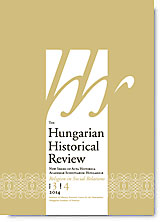Religious Life in an Industrial Town The Example of Ostrava, 1850–1950
Religious Life in an Industrial Town The Example of Ostrava, 1850–1950
Author(s): Martin JemelkaSubject(s): History
Published by: Magyar Tudományos Akadémia Bölcsészettudományi Kutatóközpont Történettudományi Intézet
Summary/Abstract: In the first half of the twentieth century, Ostrava (Moravian Ostrava, Greater Ostrava), as the center of the Ostravian industrial area (with a high concentration of plants that use coal, iron, and steel and were involved in the chemical industry in the nineteenth century), was not only an important center of Austria–Hungary and then Czechoslovakia, but also served as an important center of modern religious life in the Czech lands. Between the two world wars, the Ostravian area was the center of the Czechoslovak atheistic movement, the National Czechoslovak Hussite Church, and the Middle-European spiritualistic movement. In this essay, which is based on records and statistic materials from Ostrava City Archive and other Czech archives, will map religious life of Moravian Ostrava in relation to two social groups, the working class and the middle class of both the Czech and the German speaking populations, including German speaking people of Jewish origin. The second observed phenomenon, proselytism, will be described based on Books of religious conversions of the Roman Catholic Parish Office from 1854 to 1920. I consider the frequency of conversions between individual confessions, the most frequent reasons given for conversion, mixed marriages within working class and middle class environments, and Jewish converts to Roman Catholicism.
Journal: The Hungarian historical review : new series of Acta Historica Academiae Scientiarum Hungaricae
- Issue Year: 3/2014
- Issue No: 4
- Page Range: 875-904
- Page Count: 30

